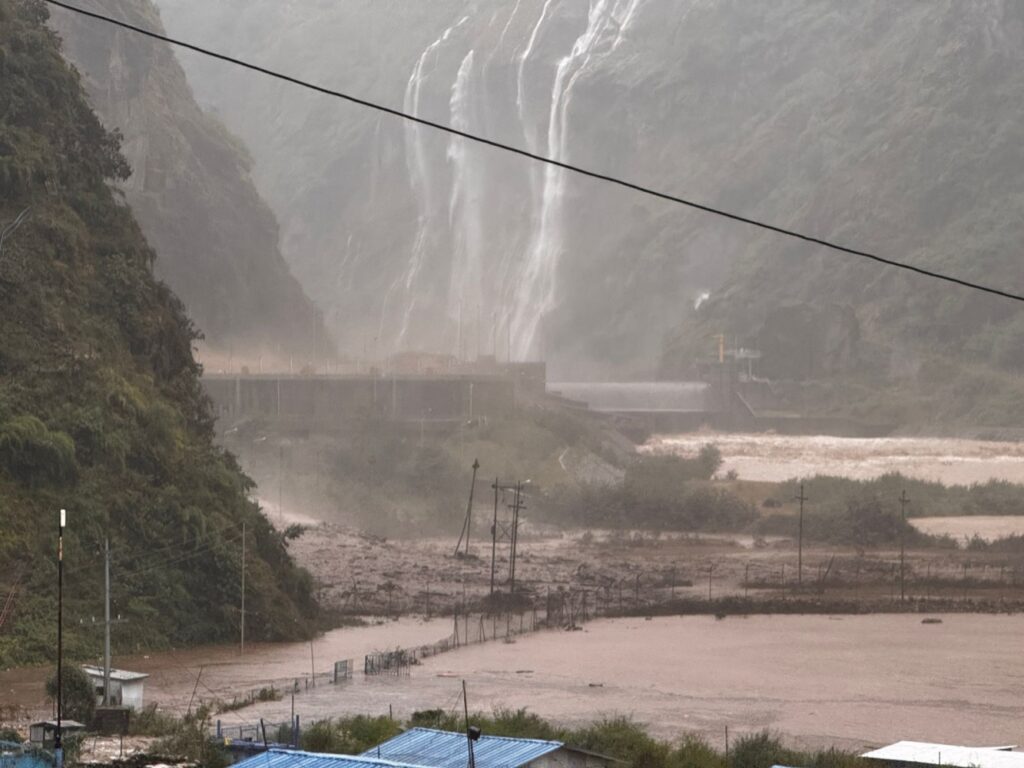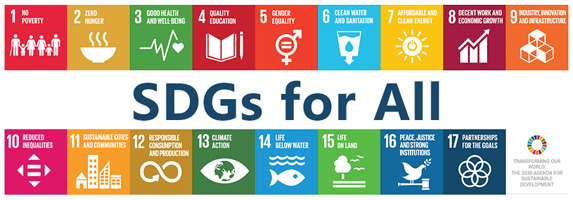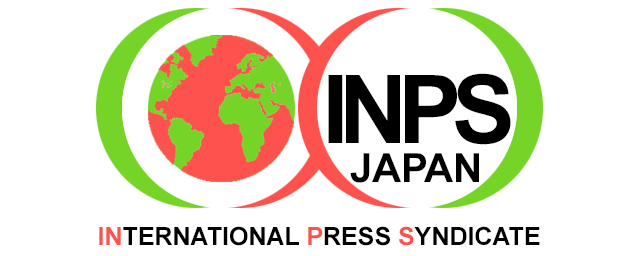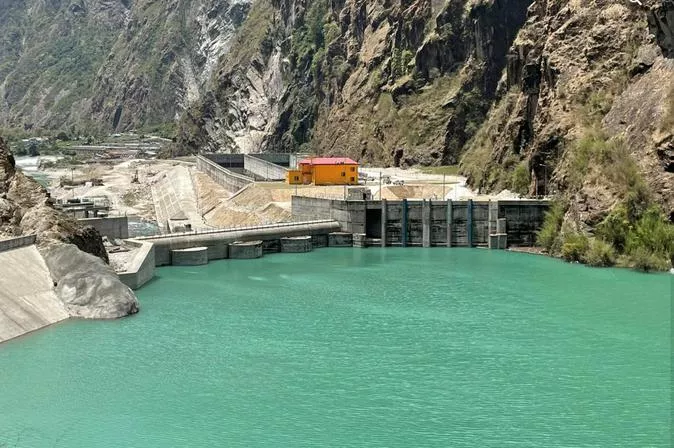The country’s ambition to boost the economy through clean energy is itself affected by climate risk
By Ramesh Kumar
Kathumandu (Nepali Times) – Nepal now generates a surplus of electricity and it is all from renewable hydropower. Nearly half the country is under forest cover. Despite meeting these decarbonisation goals, Nepal’s hydropower plants are threatened by increased risk due to climate impact. |JAPANESE|CHINESE|
Till 28 September, Nepal was exporting just over 1,000MW of electricity to power-hungry India, when flash floods and landslides unleashed by historically heavy rains damaged over 30 hydropower plants across the country, temporarily slashing nearly half the power generation.
The 456MW Upper Tamakosi in Dolakha was the hardest hit and it will take six months and Rs2 billion to repair. This has significantly reduced exports as well as domestic generation. Two months later, Nepal has still not been unable to fully keep its export commitment, and is actually paying Rs100 million in fines to India.
Thirty-seven existing and under construction projects under the Independent Power Producers’ Association Nepal (IPPAN) suffered Rs2.5 billion in damage. One of them is the 22MW Bagmati project in Makwanpur which was almost completely buried in flood debris.
Even before record-breaking rain in September, 15 other hydropower projects had been damaged by floods. Last year, floods caused by heavy localised rain damaged 28 hydropower plants.
World governments met in Baku for COP29 to discuss the Loss & Damage Fund and the Adaptation Fund, but for countries like Nepal the commas and brackets are meaningless until they are turned into $ and €. And likelihood of adequate compensation for climate-related damage is a long way off, if ever.
Nepal’s national strategy is to use its vast hydropower resource as clean energy to spur economic growth, job creation, and boost export revenue. But the plants are located in narrow Himalayan valleys prone to landslides and floods even at the best of times. Now, those risks have been heightened by weather extremes due to climate breakdown.
At present, Nepal generates over 3,300MW of clean hydropower, and the target is to reach 12,700MW in the next five years. Projects equivalent to 6,000MW are under construction or ready to start. The Ministry of Energy, Water Resources and Irrigation has an Energy Development Roadmap and Action Plan with the target of producing 28,500MW by 2035 by when more than half of it will be exported.
“The climate crisis will further change the rainfall patterns making hydropower generation a big question mark in the future,” Manjeet Dhakal in Baku, who is also the Nepali adviser to the LDC Chair at the United Nations Framework Convention on Climate Change (UNFCCC). “We are building hydropower projects on rivers without evaluating risk. This whole process needs to be reviewed and reconsidered.”
The report of the National Adaptation Plan published by the Ministry of Forest and Environment last year mentions that hydropower production, transmission and distribution will be at risk from flash floods, debris flows, glacial lake outbursts and rising temperatures.
This risk is not confined to Nepal. Average global temperatures have increased by 1.3°C compared to the pre-industrial era. Worse, the Himalayan mountains are warming faster than the global average by 0.7°C because of elevation-dependent warming.
A study conducted by our own Department of Hydrology and Meteorology in 2017 showed that the average temperature in Nepal has increased in the last four decades. Scientists say this is leading to extreme weather unleashing floods and landslides on slopes already destabilized by seismicity.

Increased atmospheric temperatures has made the monsoon rains more erratic. It does not rain when it is supposed to, and it comes down in torrents when it is not supposed to. The September floods happened two weeks after the monsoon was supposed to retreat from central Nepal. Kathmandu Valley received half its annual precipitation in just over a day.
Winter precipitation has also failed, especially in the high mountains and trans-Himalayan valleys. Thirteen of the past 19 years experienced winter drought. This impacts on dry season flows of the rivers, reducing hydropower generation.
Nepal’s power capacity normally goes down by one-fourth during winter, but the gap is widening. The Kabeli corridor could only generate 20MW November-March even though plants there have an installed capacity of 200MW. Similarly, Upper Tamakosi only produced 65MW at most against its 456MW capacity last winter.
The Nepal Electricity Authority (NEA) pays producers double the price for winter electricity, Rs8.40 per unit. Even though winter operation is highly profitable the rivers run low and NEA has to import from India to meet the winter demand.
“This is not just a weather problem but a serious challenge also for the country’s energy future, good climate-friendly design should be combined with policy and effective implementation,” says Subarna Das Shrestha, a hydropower investor and CEO of Sanima Mai Hydropower. “Insurance premiums have gone up as well, and settlement for damage is not timely.”
Hydropower investment at one time was regarded as having a high rate of return. Now, some investors have become wary of the risks involved. Says IPPAN’s Uttam Blon Lama: “Hydropower projects expected to give stable returns are now looking risky. Not only is climate adaptation design and planning expensive, but future repair and maintenance costs will also skyrocket.”
Nepal has only one storage type dam in Kulekhani and another one is being built in Tanahu, but they are also at risk. In September, the sluice gates of Kulekhani Dam had to be opened causing loss of life and destruction downstream. Nepal has to learn lessons from the deadly collapse of the $1 billion Chungthang Dam in Sikkim in October 2023 cause by a glacial lake burst.
Glacial Lake Outburst Floods (GLOFs) in Nepal pose potentially catastrophic risk to infrastructure. The Thame flood in August was a relatively minor debris flow that damaged half of this village in the Everest region when two glacial lakes at 4,760m burst. Luckily there was no loss of life.
Of the 47 high-risk glacial lakes in the eastern Nepal Himalaya, 21 are in Nepal and the rest are in rivers in China that are tributaries of the Arun and Bhote Kosi where Nepal has major hydropower plants under construction, or planned.

Global temperature rise is accelerating the melting of Himalayan snow and ice, increasing the number and size of glacial lakes so that we do not even have names for them. Imja Tso did not even exist in the old trekking maps until 25 years ago, but is now a 2km long lake.
“Natural moraine dams in the mountains are weak, and the projects downstream can face major destruction if they burst, and the risk will only increase in future,” warns climatologist Arun Bhakta Shrestha at the International Centre for Integrated Mountain Development (ICIMOD).
An ICIMOD assessment in 2019 projected that if present heating trends continue, as they probably will, the Himalaya will lose two-thirds of our glaciers by the end of this century.
“Generally speaking, hydropower developers hand over the project to the government after 30 years but by that time given the climate risks, they may not be an asset anymore,” says Manjeet Dhakal. Indeed, the cascade of expensive projects India is building on the Arun River are supposed to be handed back to Nepal in 25 years, but there is a big ‘if’ about whether they will survive that long.
Planning of hydropower projects is still based on historical hydrological data, and does not take into account future temperature rise and its consequences. Investors, on the other hand, say that planning hydropower projects with climate components would make them even more expensive.
“It’s not that we aren’t preparing for climate risk, we design keeping in mind the once-in-100-year flood,” says Blon of IPPAN. “But if we start designing based on once in 1,000 years flood, the cost would be so high that we won’t be able to build them at all.”
Nonetheless, Subarna Das Shrestha of Sanima Mai Hydropower says that there is no option but to go for climate smart infrastructure despite the higher cost. Sanima Mai’s powerhouse, for example, is completely underground. The strategy could also be to spread the risk by building less expensive plants located on rivers all over the country.
Nepal is also diversifying away from its sole reliance on hydroelectricity, which at present supplies 92% of the power in the grid. Most of the rest comes from solar plants, where the total potential has not even been scratched.
This article is brought to you by Nepali Times, in collaboration with INPS Japan and Soka Gakkai International, in consultative status with UN ECOSOC.
INPS Japan




